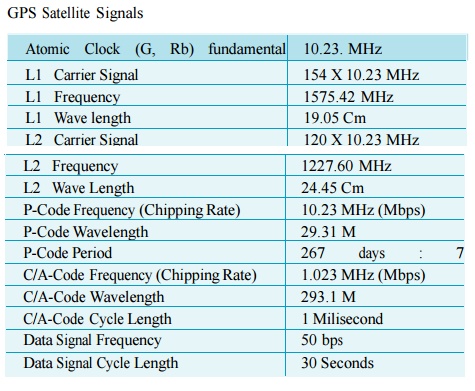Chapter: Civil Surveying : GPS Surveying
GPS Surveying: Observation Principle and Signal Structure
OBSERVATION PRINCIPLE AND SIGNAL STRUCTURE
NAVSTAR GPS is a one-way ranging
system i.e. signals are only transmitted by the satellite. Signal travel time
between the satellite and the receiver is observed and the range distance is
calculated through the knowledge of signal propagation velocity. One way
ranging means that a clock reading at the transmitted antenna is compared with
a clock reading at the receiver antenna. But since the two clocks are not
strictly synchronized, the observed signal travel time is biased with
systematic synchronization error. Biased ranges are known as pseudoranges.
Simultaneous observations of four pseudoranges are necessary to determine X, Y,
Z coordinates of user antenna and clock bias.
Real time positioning
through GPS signals is possible by
modulating carrier frequency with Pseudorandom Noise (PRN) codes. These are
sequence of binary values (zeros and ones or +1 and -1) having random character
but identifiable distinctly. Thus pseudoranges are derived from travel time of
an identified PRN signal code. Two different codes viz. P-code and C/A code are
in use. P means precision or protected and C/A means clear/acquisition or
coarse acquisition.
P- code has a frequency of 10.23
MHz. This refers to a sequence of 10.23 million binary digits or chips per
second. This frequency is also referred to as the chipping rate of P-code.
Wavelength corresponding to one chip is 29.30m. The P-code sequence is extremely
long and repeats only after 266 days. Portions of seven days each are assigned
to the various satellites. As a consequence, all satellite can transmit on the
same frequency and can be identified by their unique one-week segment. This
technique is also called as Code Division Multiple Access (CDMA). P-code is the
primary code for navigation and is available on carrier frequencies L1 and L2.
The C/A code has a length of only
one millisecond; its chipping rate is 1.023 MHz with corresponding wavelength
of 300 meters. C/A code is only transmitted on L1 carrier.
GPS receiver normally has a copy
of the code sequence for determining the signal propagation time. This code
sequence is phase-shifted in time step- by-step and correlated with the
received code signal until maximum correlation is achieved. The necessary
phase-shift in the two sequences of codes is a measure of the signal travel
time between the satellite and the receiver antennas. This technique can be
explained as code phase observation.
For precise geodetic
applications, the pseudoranges should be derived from phase measurements on the
carrier signals because of much higher resolution. Problems of ambiguity
determination are vital for such observations.
The third type of signal
transmitted from a GPS satellite is the broadcast message sent at a rather slow
rate of 50 bits per second (50 bps) and repeated every 30 seconds. Chip
sequence of P-code and C/A code are separately combined with the stream of
message bit by binary addition ie the same value for code and message chip
gives 0 and different values result in 1.
The main features of all three
signal types used in GPS observation viz carrier, code and data signals are
given in Table 3.
GPS Satellite Signals

The signal structure permits both
the phase and the phase shift (Doppler effect) to be measured along with the
direct signal propagation. The necessary bandwidth is achieved by phase
modulation of the PRN code as illustrated in Fig. 6.

Fig 4.6
Generation of GPS Signals
Related Topics